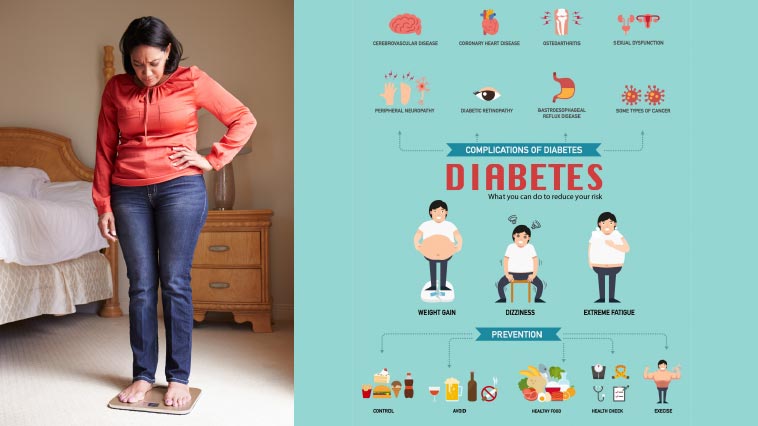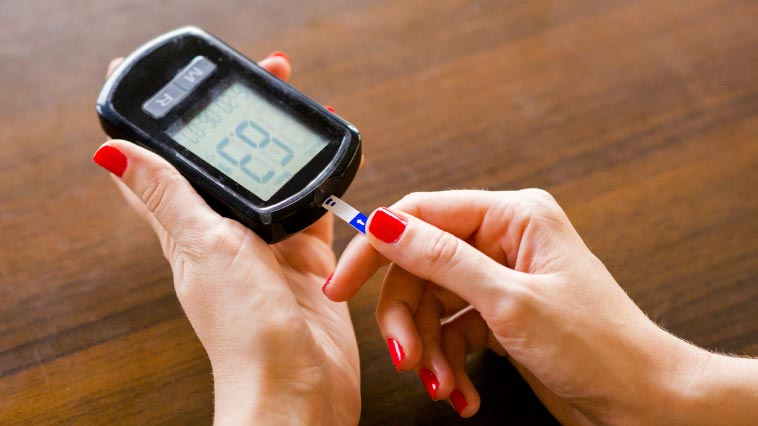Imagine not being able to freely dig into that giant piece of cake. Or refusing that delicious beverage, even though you crave it. Having diabetes can rob you of some simple pleasures in life, unless your lifestyle proactively works to avert the disease today.
Dr Maria Emerita Co-Deleon, who deals with internal medicine and cardiology at the American Mission Hospital, explains how the body handles sugar: “Once sugar has been processed by the digestive system, the pancreas is stimulated to release insulin in our bloodstream,” she says. “Insulin is a hormone that helps sugar enter the cells, where it is used for energy; without it, sugar will remain in the bloodstream. If you have more sugar than your body requires, insulin also helps store this sugar in the liver, to be released once the blood sugar levels become low.”
Sometimes, this process sees a glitch. Dr Emerita explains: “There are two types of diabetes: in Diabetes Mellitus Type 1, there is a primary lack of insulin production by the pancreas to process sugar. In Diabetes Mellitus Type 2, patients have insulin resistance. This means that there is enough insulin, but the body’s cells don’t respond to it and can’t take in glucose from the blood. This will lead the pancreas to produce more insulin to help sugar enter the cells, keeping glucose levels at a normal range. Eventually the required insulin production falls short, leading to elevated blood sugar.”
Given how much we love our sweet treats, we ask the expert if sugar is the sole culprit. She says: “Excessive sugar consumption contributes to weight gain, which increases risk for Type 2 diabetes. But it is not solely sugar – calorie-rich, starchy food [carbohydrates], can also contribute to the development of diabetes.”
 If you are wondering whether you will ever fall prey to this disorder, know that both genes and lifestyle are important. Generally, the risk factors for Type 1 diabetes are inherited from both parents. Type 2 also has a strong link to family history, coupled with lifestyle factors – namely obesity and physical inactivity – that contribute to insulin resistance. Studies show it is possible to delay or prevent Type 2 diabetes by exercising and weight loss, explains Dr Emerita.
If you are wondering whether you will ever fall prey to this disorder, know that both genes and lifestyle are important. Generally, the risk factors for Type 1 diabetes are inherited from both parents. Type 2 also has a strong link to family history, coupled with lifestyle factors – namely obesity and physical inactivity – that contribute to insulin resistance. Studies show it is possible to delay or prevent Type 2 diabetes by exercising and weight loss, explains Dr Emerita.
She continues: “This chronic medical condition is a lifelong disease that can be controlled by lifestyle changes and medication(s). There is no known ‘cure’ yet. It can be progressive if not adequately treated or controlled.”
Uncontrolled diabetes often leads to complications. “Acute complications can lead to a coma, or even death. Chronic complications are slow, progressive damage to the body brought about by uncontrolled sugar. It can involve the nerves [neuropathy], causing either pain, abnormal sensation or numbness or haemorrhages on the retina [retinopathy] that can lead to blindness,” Says Dr Emerita. “It can also cause kidney damage [nephropathy], that can lead to renal failure and requires dialysis. Uncontrolled diabetes also increases the risk for heart disease and stroke.”
 Symptoms:
Symptoms:
Symptoms of diabetes include frequent urination, frequent thirst, and frequent hunger (medically known as the three Ps – polyuria, polydipsia and polyphagia). Nocturia, or frequent urination at night; extreme fatigue or weakness; slow-healing wounds; blurry vision; and abnormal sensations like tingling, pins-and-needles or numbness of the hands and feet are other signs. Weight loss is a common manifestation of Type 1 diabetes. However, symptoms of Type 2 diabetics may be mild and go unnoticed.
Anyone who shows symptoms should be tested as soon as possible. In the absence of any symptoms, the American Diabetes Association (ADA) recommends screening irrespective of age in adults who are overweight and have at least one risk factor for diabetes – namely, physical inactivity, positive family history (in a first-degree relative), hypertension, elevated triglycerides and/or low HDL (the good cholesterol), a history of cardiovascular disease, and high-risk ethnicity (African-American or native American).
Healthy adults without any risk factors should undergo checks starting at age 45, every three years if results are normal.
The good news is that diabetics need not completely avoid sugars and starches. Dr Emerita explains: “The ADA does not totally restrict sweet or starchy food. The key lies in having very small portions of food like bread, potatoes and pasta on special occasions.
It’s important to know your limits. Fruits are good sources of vitamins, minerals, and fibres, but are high in natural sugar that can still raise blood glucose levels. A limit of three servings of fruit a day is usually recommended, keeping in mind that a serving size depends on the fruit. Consultation with a dietician is advised to know the amount, frequency and types of food that can be eaten, based on individual cases.”
 Prediabetes:
Prediabetes:
Prediabetes is when your blood sugar level is higher than normal, but not high enough to be considered diabetes. It is the alarm bell that allows you to make lifestyle changes to avert full-on diabetes.
To Dodge the D word:
– Lose the extra kilos
– Exercise regularly
– Eat a plant-based, fibre-rich, low-carb diet
– Go easy on the sweeties
– Limit food portion sizes
– Ensure optimum vitamin D levels
– Quit smoking





































